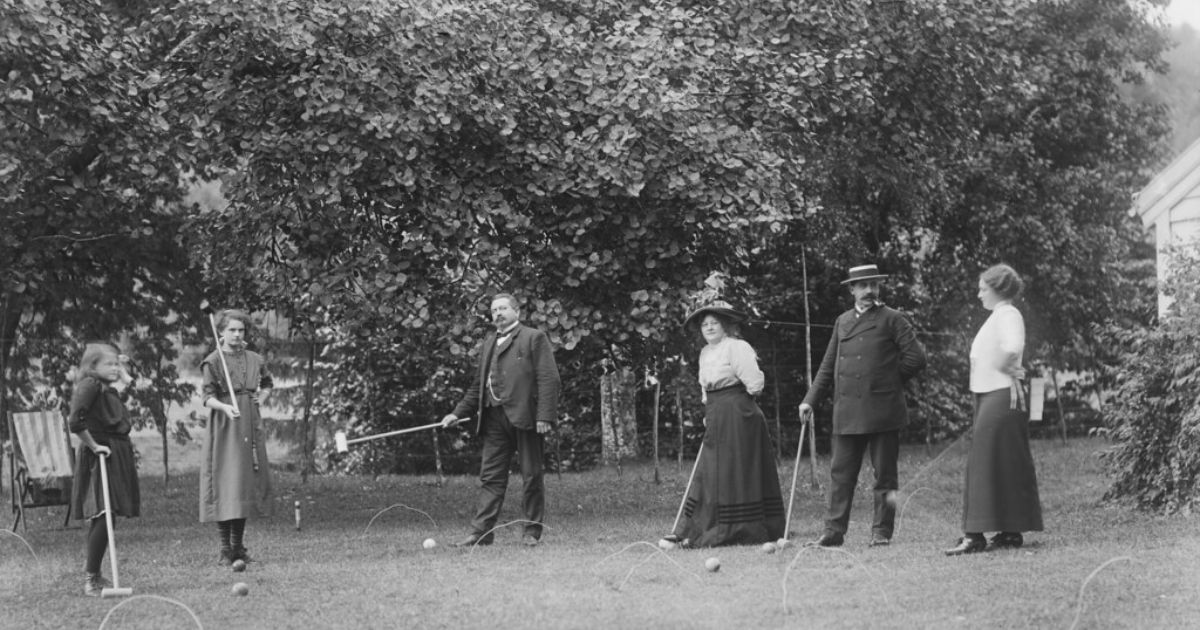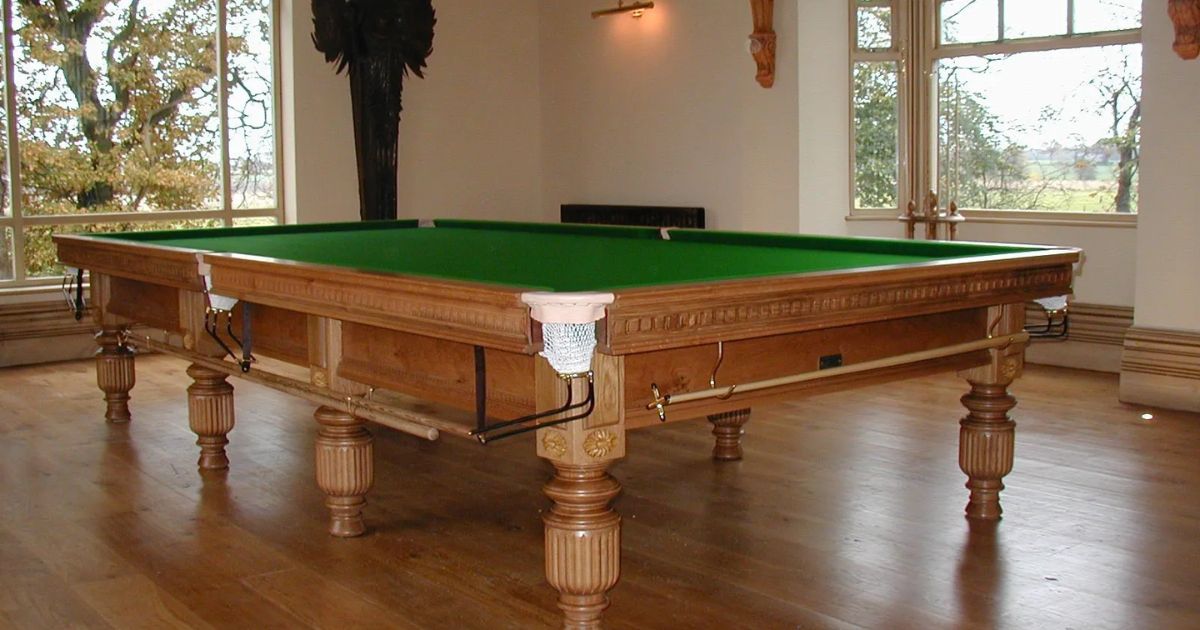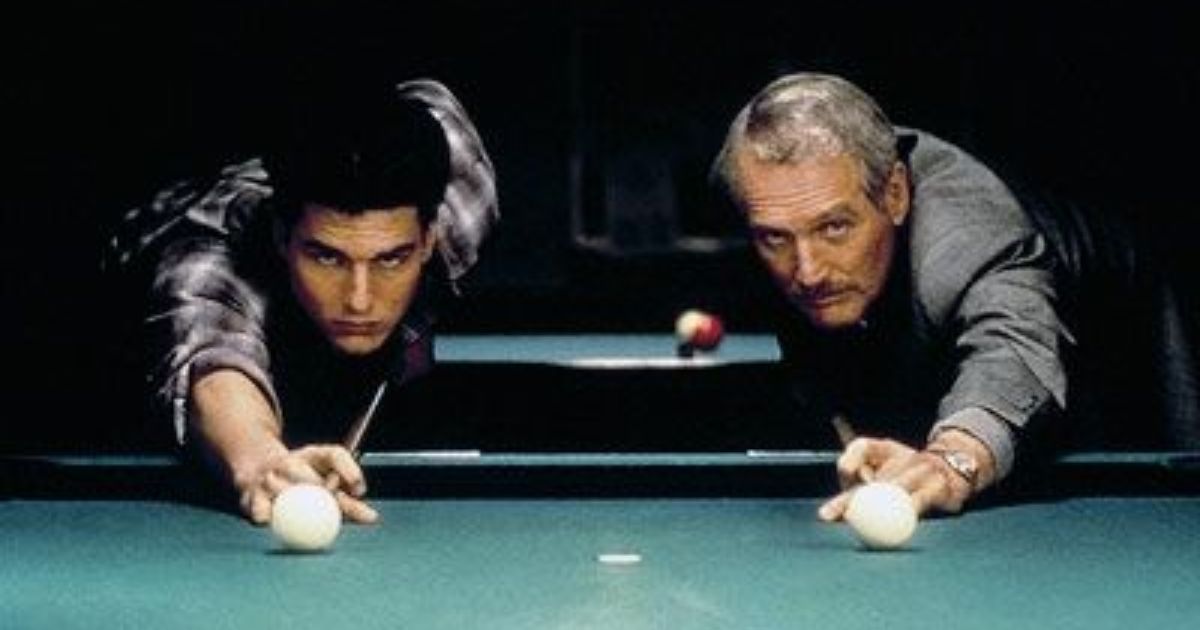When Was The Pool Table Invented? Pool Table Origins
Key Takeaways
- When was the pool table invented? The origin of the pool table game is the same as that of croquet outside in the 15th century in Northern Europe.
- In the 1600s, King Louis XI of France was the first to own an indoor pool table, launching its development.
- People use technological advances and design evolution to change and improve pool tables over time to ease the gameplay.
- Modern pool tables have changed over the years and in different countries, from design, style, and form to dimension to meet player needs.
When did pool tables come out? You will get to know details about its history below.

Billiards game in history
The Origins of Billiards
Billiards has a fascinating history. It was played by all sorts of people, from kings to everyday folks. It started in Northern Europe, possibly even in France, in the 15th century.
Initially, it was played outside on the grass, like croquet. Eventually, people brought it inside onto a wooden table covered in green cloth to mimic the grass.

Billiards game was play outside like croquet
Instead of hitting the balls like we do now, they used to push them around with wooden sticks called “maces.” The word “billiard” comes from French, which means one of those sticks, or “bille” -the history of billiards ball.
The Birth of the Pool Table

Louis XI was the first person own the pool table indoor
Who invented the pool table?
King Louis XI of France(1461–1483) was the first to own an indoor billiard table in the 1400s, the first pool table ever made.
When was the pool table invented? In the 1600s, around 1825-1830, European pool games used tables with bare wooden surfaces instead of smooth slate, making ball movement uneven and hard to predict.
At first, there weren’t any pockets, just curved rails to keep balls from rolling off. Players had to avoid hitting balls into holes, pins, and pegs on the table. They still used mace cue sticks, similar to outdoor grass billiards.
Later, in the late 1600s, they added pockets to collect balls, but the pockets weren’t holes yet; they were nets along the rails. The cushions upgraded from straw to cloth.
Despite the essential gear, the nobility loved and bet on the game. Players even had fancy tables made for ornate game rooms.
As the 1700s went on, tables became more standardized, with square corners and actual pocket holes. This evolution made billiards a refined hobby for gentlemen.
Technological Advances and Design Evolution

The new evolution of pool table
Initially, players found their maces weren’t great for hitting balls near the table’s edges. The mace heads were too big, so it was hard to get a good hit.
They figured out they could flip the mace around and use the thinner handle to hit these balls instead. They called this part of the mace the “queue,” which means “tail” in French. And that’s where the word “cue” comes from, which we still use today for the playing stick.
In the 1700s, tables were wooden with walls around the edges to stop balls from rolling off. These walls reminded people of riverbanks, so they called them “banks.” Players soon discovered they could bounce balls off these banks for fancier shots, giving rise to the “bank shot.”
In the 1800s, the Industrial Revolution had a significant impact on billiards. People started using chalk to make the cue stick grip the ball better. Companies began making special tips for cue sticks, like ones made of leather. These tips allowed players to try new ways to hit the ball, like adding spin.
Then, in the early 1800s, they invented the two-piece cue stick, which we still use today.
Around this time, people realized that wooden pool tables weren’t holding up well because they would warp. So, they began using slate instead of wood for the tabletops. Slate provided a smooth and durable surface.
At the same time, rubber became popular, and companies started making billiard cushions around the edges of tables.
By the mid-19th century, billiard tables started resembling the ones we see today.
The Standardization Era

Mass production over the world of pool table in the late 19th century
In the late 19th century, the pool became a global phenomenon thanks to mass production and transportation advancements. Pool tables were exported worldwide via railroads and steamships, spreading the game beyond Europe and Britain.
The British Empire is also influential in introducing billiards variations to its colonies and trading partners.
In North America, premier billiards factories like Brunswick flourished to meet the growing demand. The pool became popular across the continent, and people played pool games in basements, barrooms, and ballrooms.
Different regions developed their preferences, leading to variations in equipment and pool rules. However, the love for the game united people across borders, bridging sporting and social divides.
Almost overnight, pool transformed from a niche hobby into a beloved global pastime enjoyed by millions.
The Golden Age of Billiards

Tournaments of pool table global
In the late 1800s, pool halls were bustling, but their popularity didn’t last. As the 20th century went on, society changed. People started to disapprove of gambling, and the two world wars shifted attitudes toward spending time at pool halls, especially for young men.
But the love for the game never disappeared entirely. Some pool halls have reopened with a friendlier atmosphere for families. And now, many people prefer playing pool at home, relaxing, and having fun with friends and family.
Television brought pool tournaments to living rooms in the mid-20th, making the sport more accessible and exciting. This exposure attracted new fans and changed perceptions, helping pool games gain mainstream recognition and popularity.
The pool had then become a structured competitive sport with tournament appeal while still being a fun pastime for everyone.
Modern Pool Tables

The modern pool table in the Victorian Era
Over the years, pool table designs have evolved to mirror changing tastes and trends.
- In the Victorian era, tables were ornate and decorative.
- In the 1920s-30s, craftsmen and different pool table styles became popular.
- In the mid-20th century, they brought sleek, modern cues and minimalistic table designs.
- Today, contemporary tables feature digital scoreboards, accent lighting, and tech-integrated accessories catering to modern recreational preferences.
Additionally, in today’s modern pool tables, various shapes and sizes are available for those interested in exploring different dimensions of pool tables.
Cultural Significance

Tom Cruise and Paul Newman with pool game in a history film
The pool had declined in popularity as both a casual pastime and an organized sport. But two iconic movies brought it back into the spotlight.
In 1961, “The Hustler” starred Paul Newman as a skilled pool player, sparking interest in the underground hustling scene.
Then, in 1986, Martin Scorsese’s “The Color of Money” showed an older character mentoring a young pool player, played by Tom Cruise.
These films’ intense pool matches and competitive drama reignited people’s fascination with the game.
As a result, pool halls saw a surge in visitors, and youth interest in the sport soared in the 1980s and 90s.
The rebellious charm of the pool hall became hustle again, securing the pool’s revival as both a leisure activity and competitive sport for years to come.
When were pool tables invented? Thanks to this expert article by Pearson Cue, that question is no longer difficult. We hope you thoroughly enjoy the pool game by deeply understanding its history.

Dave Pearson
Dave Pearson, the world's leading pool entertainer, is renowned globally as the ultimate exhibition player.
Boasting 20 world records endorsed by the prestigious Guinness Book of World Records, Dave established a legendary history in the sport industry.
